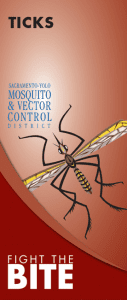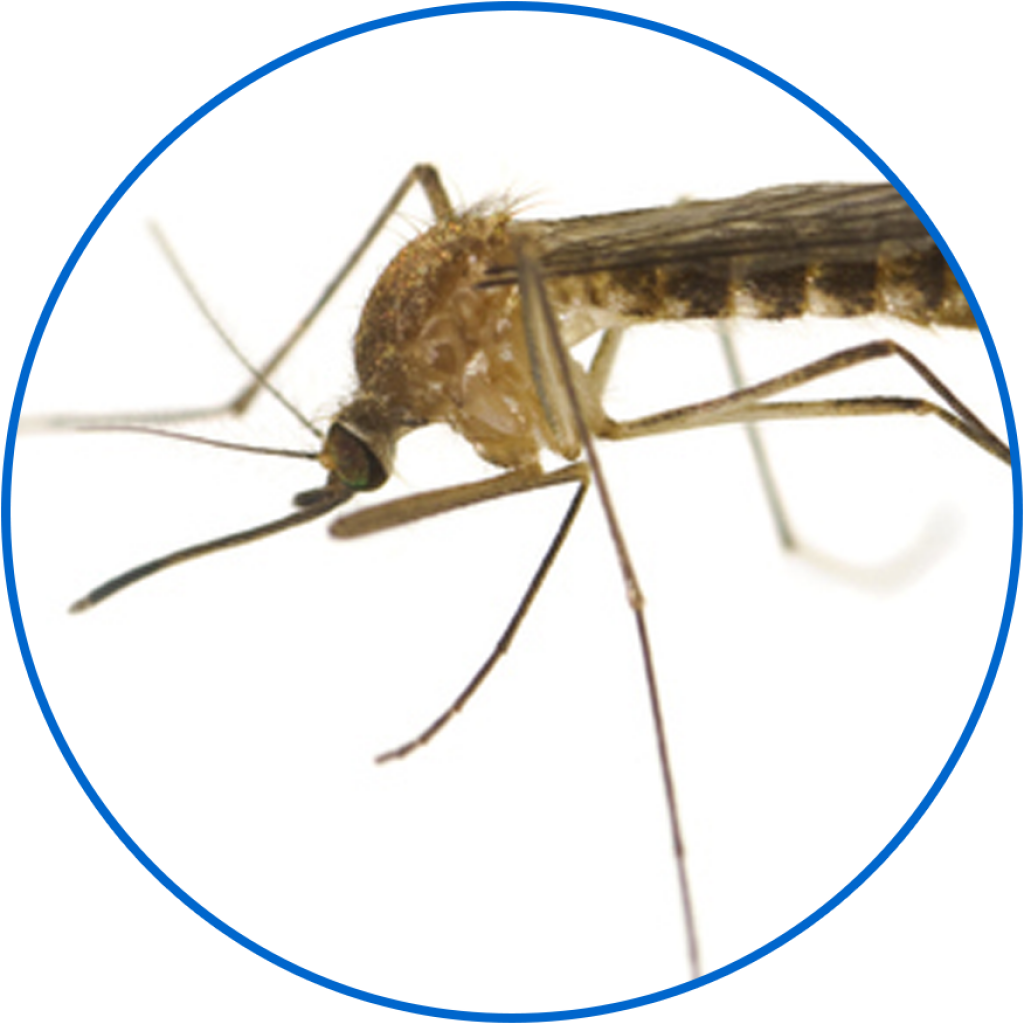TICKS
Ticks are blood-sucking arthropods, both males and females take blood to survive and complete their life cycle. There are two major families of ticks include the Ixodidae or hard ticks, which have a hard outer covering called a scutum, and Argasidae or soft ticks, which do not have a scutum. Soft ticks typically live in crevices and emerge briefly to feed, while hard ticks will attach themselves to the skin of a host and feed for multiple days.
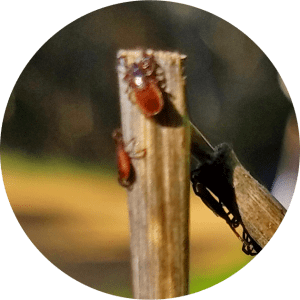
HABITAT AND BEHAVIOR
Within our District area people are most likely to come into contact with hard ticks. Ticks do not fly, jump, or fall out of trees! They are usually found in grassy, brushy, or wooded areas. They wait on the tips of vegetation for a human or other animal to pass by, as the host brushes past, the tick grabs on. Some ticks will crawl around on the host for hours before finding a suitable spot. You may have a chance to feel and remove a larger tick while it is crawling around, but some ticks are so small you may never even know you were bitten. Once a tick finds a suitable spot it will begin the feeding process.
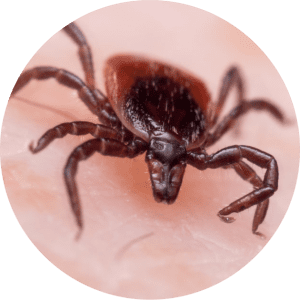
FEEDING
Contrary to popular belief, ticks DO NOT embed their heads in skin. Ticks are equipped with specialized serrated mouthparts adapted to penetrate and hold fast in the skin of its host. Additionally, they secrete a cement-like material that helps them stay attached to their host. Hard ticks take several days to complete feeding after which time they remove their mouthparts and drop off the host.
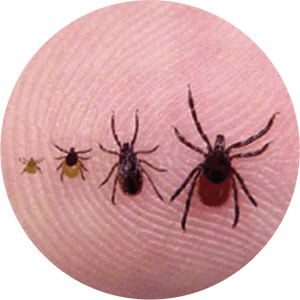
LIFE CYCLE
Ticks go through a four-stage life cycle including egg, larva, nymph and adult. Both males and females take a blood meal in order to transition into each of the last three life stages. The life cycle is complete and the tick dies after the male mates with the female, and the female lays eggs. The photo shows the different life stages from left to right including larva, nymph, adult male, and adult female.
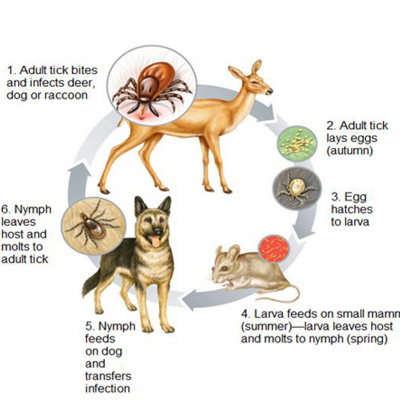
LYME DISEASE
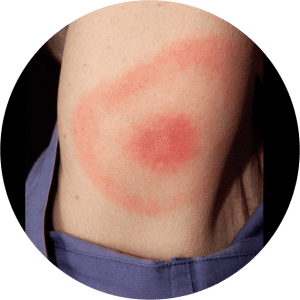
Lyme disease is caused by Borrelia burgdorferi, a type of bacteria called a spirochete, and in our area is vectored by Ixodes pacificus (western black-legged tick). Early symptoms of Lyme disease may include head and muscle aches, sore throat, nausea, fever, stiff neck or fatigue. About 80 percent of those infected develop a rash at the bite site, which sometimes resembles a “bull’s eye.” Later symptoms may involve numbness or tingling of the limbs, joint swelling and pain, memory loss, and/or mood swings. Inform your physician immediately if you develop any of these symptoms after finding a tick attached to your skin or if you spent time in a tick habitat, as sometimes larval and nymphal tick bites can go unnoticed.
TICK REMOVAL
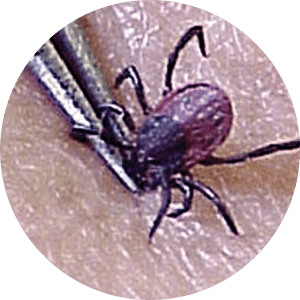
Using tweezers, grasp the tick’s mouthparts as close to the skin as possible.
Gently pull the tick straight out with steady pressure. DO NOT twist or jerk the tick, or try to remove by burning or applying Vaseline, kerosene, etc., as this may cause the release of infectious tick fluids.
Apply an antiseptic to the bite area after removing the tick and wash your hands with soap and water.
Save the tick for identification. Contact the District or County Health Department for tick identification.


